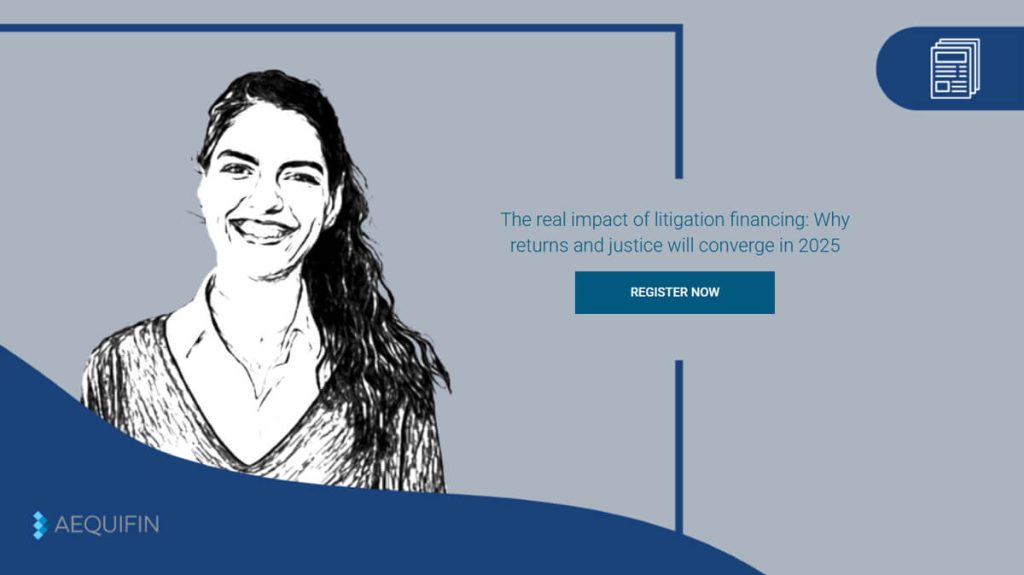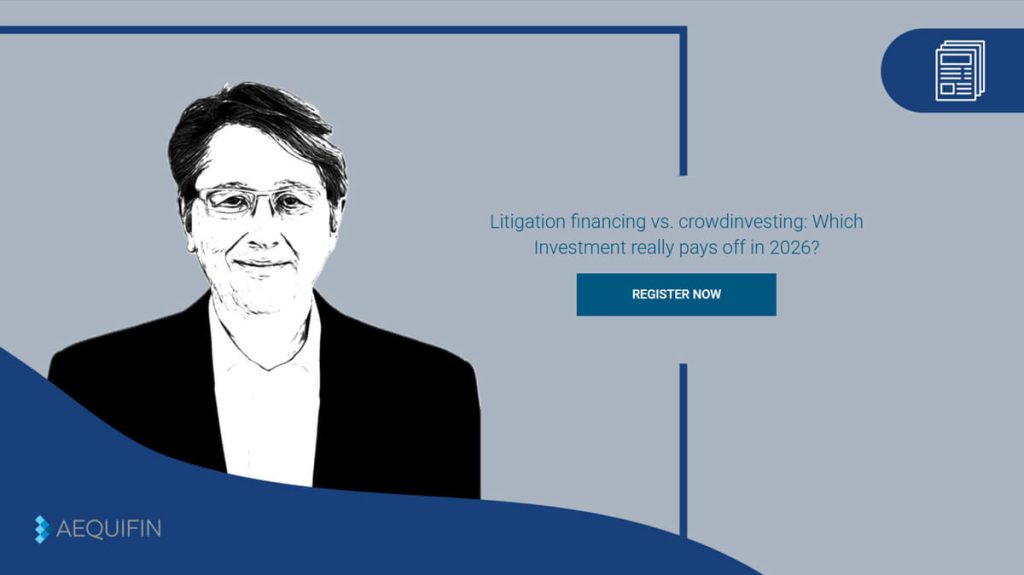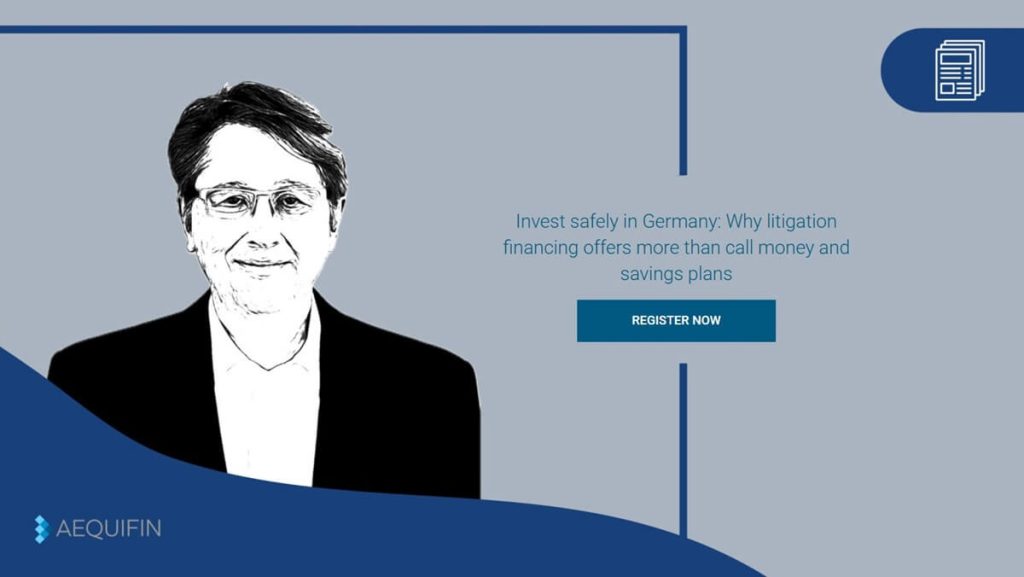Litigation funding is seen as a beacon of hope for claimants, offering a way to pursue legitimate claims without financial risk. For investors, it opens up an alternative investment field outside traditional markets. But where there is potential, there are also challenges. As clearly as the advantages are often communicated, the risks of litigation funding remain underrepresented in many discussions.
In this article, we shed light on which risks in litigation funding are truly relevant, how they differ, and what role litigation funding itself, its prerequisites, and the choice of provider play. This is not about irrational theories but about a factual, valuable, and informed perspective. Those who understand the mechanisms can make well-founded decisions and avoid common disadvantages of litigation funders right from the start.
Litigation Funding Risks – At a Glance
- What Risks of Litigation Funding Arise from Unclear Chances of Success in a Case?
- What Burdens Does a Lawsuit Impose in Terms of Time, Mental Strain, and Capital Commitment?
- How Do Transparent or Unclear Contracts Affect Dependency on the Funder?
- Why Is the Funder’s Economic Share in the Event of Success Not a Disadvantage?
- How Can Claimants and Investors Better Assess the Risks of Litigation Funding?
1. Is the Lack of a Case’s Chances of Success a Risk?
Not every case is fundamentally eligible for funding. One of the central risks of litigation funding lies in the possibility that a case fails already during the preliminary review — whether due to unclear evidence, legal uncertainty, or lack of economic prospects. For claimants, this often means that without funding, the legal path remains closed. In such cases, access to justice depends less on the claim itself and more on the assessment of its fundability.
A thorough legal and economic evaluation is therefore crucial. Platforms like AEQUIFIN address this precisely. Through transparent and structured pre-screening, only cases with realistic chances of success are approved — regardless of the amount in dispute or the industry. This protects not only applicants from disappointed expectations but also investors, whose capital is deployed in a targeted and risk-conscious manner.
Despite this selection, a residual risk remains in litigation funding. No review process can fully anticipate future developments or tactical twists during litigation. Therefore, professional pre-screening is not a guarantee but an essential component of risk mitigation.
Tip: For more on the requirements and funding models, see the overview: “Litigation Funding – What Options Exist?”
Is the Course of a Lawsuit Unpredictable?
A lawsuit is not a static construct. It often develops over the course of years. This is precisely where one of the central risks of litigation funding lies: the dynamics of the legal process cannot always be fully controlled.
Typical uncertainties include:
- Changes of judges or court personnel that may lead to altered assessments
- New evidence, delayed expert reports, or tactical delays by the opposing party
- Appeals to higher courts with uncertain outcomes and additional time requirements
For claimants, this means:
- Extended proceedings can be a significant psychological and time burden
- If funding is suspended or terminated, the path to litigation often becomes blocked
- Even with a solid case assessment, success is not guaranteed
For investors, this means:
- Delays reduce capital returns and tie up liquidity
- In the event of a negative ruling, the full loss of invested capital is at risk
- There is increased risk if the case’s pre-screening was not conducted carefully or independently
- In rare cases, investors report that a litigation funder refused payment if their assessment changed afterward
Many litigation funding experiences are consistently positive, particularly when there is transparent communication and professional guidance. However, especially in complex cases, it becomes clear that a thorough selection of the funding partner and contractually secured procedures are essential to minimize the risk of unpredictable legal proceedings.
How Much Dependence on the Litigation Funder Exists in Litigation Funding?
The decision to opt for litigation funding is not merely a matter of covering costs; it is a temporary partnership. And this is precisely where one of the structural risks of litigation funding lies: the dependence on the chosen funder.
What if the funder withdraws?
The consequences can be severe, especially if there are no clear contractual agreements on participation rights, termination, or continuation.
What Should Claimants Pay Attention To?
- Are there contractually regulated transparency and reporting obligations?
- Is there a right to have a say in settlements or case withdrawals?
- Under what conditions may the funder terminate or refuse payment?
For investors, the question also arises as to how reliably the provider selects and manages the cases, as dependence also occurs on the capital side if structures are non-transparent or selectively accessible.
What Should Be Considered When Choosing a Litigation Funder?
For Claimants:
- Are there contractually regulated transparency and reporting obligations?
- Is there a right to have a say in settlements or case withdrawals?
- Under what conditions may the funder terminate or refuse payments?
For Investors:
- Are the selection criteria and review processes communicated transparently?
- Is there a clear participation structure and risk allocation?
- How is the ongoing flow of information about case progress ensured?
2. Three Litigation Funders Compared
| Provider | Model Type | Focus & Special Features |
|---|---|---|
| FORIS AG | Traditional Funder | Specialized in large commercial litigation cases. Does not review smaller cases. |
| LCM Finance | European Specialist | Active in the international B2B sector, particularly in arbitration proceedings. Very selective case screening. |
| AEQUIFIN | Platform Model | Digital assessment of all cases – regardless of dispute value or industry. Transparent allocation to suitable sponsors. |
Key Differentiator: AEQUIFIN reviews every submitted case individually – not just large-scale litigation. This reduces selective exclusion risks and broadens access to litigation funding.
➜ Key Differentiator
AEQUIFIN reviews every submitted case individually, not just large-scale litigation. This reduces the risk of selective exclusion criteria and also opens access to funding for medium-sized cases.
Is the Economic Participation in the Event of Success a Risk?
Litigation funding is based on a simple principle: capital in exchange for participation. Whoever provides the funding participates — ideally in the event of success. And yet, this mechanism is among the most frequently misunderstood risks of litigation funding. What may appear at first glance to be a disadvantage is, at its core, an economic necessity.
A claim that would not be pursued without external funding has no real value for the claimant. The surrender of a share in the proceeds thus becomes the entry ticket to a lawsuit that otherwise would never have taken place. The often-cited criticism — that the litigation funder takes part of the gain — overlooks this structural reality.
Especially in labor law or individual civil cases, it becomes evident that access to the legal system often depends on funding. And it is precisely here that participation provides a solution, not a burden.
Only those who can realistically expect a return should, as claimants, agree to such participation. What matters is whether the deductions are proportionate to the risk and the benefit.
For investors, on the other hand, participation is not a bonus but the foundation of their expectations. The return does not arise automatically but from a complex interplay of litigation strategy, duration, and outcome. Particularly in class actions or regulated areas such as labor-law-related litigation funding, this equation can prove volatile.
“What remains is a sober insight: economic participation is not a hidden risk but the price of empowerment.”
3. What Are the Requirements and Expectations for Litigation Funding – Here’s What You Should Examine
Anyone dealing with litigation funding, whether as a claimant or as an investor, should not focus solely on returns or cost relief. The crucial factor is the proper understanding of requirements, expectations, and responsibilities. Many of the perceived risks of litigation funding can, upon closer inspection, be traced back to a mismatch between expectations and reality.
An initial legal assessment, reliable documentation, and a minimum level of communication are fundamental prerequisites for a serious evaluation. Platforms like AEQUIFIN handle this assessment quickly, systematically, and independently of the amount in dispute or the legal field. Yet the same principle applies here: without substance, there can be no case.
Investors, in turn, should calibrate their expectations. Litigation funding is not a high-frequency market with short-term returns. It involves illiquid, event-driven engagements with asymmetric risks. Those who participate need patience, diversification, an understanding of legal processes, and the willingness to accept individual losses while trusting in the overall quality of the portfolio.
A fair risk assessment succeeds when…
- …claimants compare multiple offers and understand the contract terms
- …investors focus on transparency in case review, reporting, and exit options
- …both parties use platforms like AEQUIFIN that rely on digital processes and open communication
Conclusion
Litigation funding is not a risk-free model but a calculable one. Those who know the rules make better decisions. And those who understand the risks also recognize the opportunities.
If you now want to know exactly how to proceed step by step through the AEQUIFIN platform — from the case review to risk calculation — you can find all the information in the practical guide:
Go to the Step-by-Step Guide for Litigation Funding with Risk Assessment.












